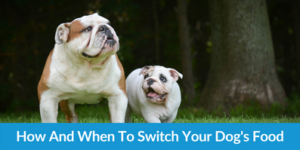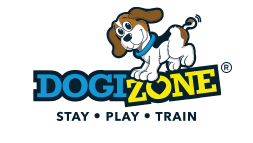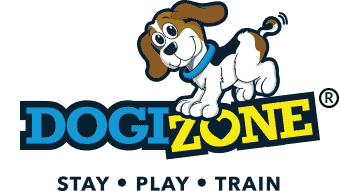How And When To Switch Your Dog’s Food
Throughout their lives, dogs, just like people, have different nutritional needs; so it’s important to know how and when to switch your dog’s food. Puppies are rapidly growing and developing, and they need the right nutrients for optimal growth, including higher levels of protein. Adult dogs are more likely to require a maintenance diet that is based on their overall activity level. Unlike puppies that need a lot of protein and calories for growth, overfeeding or feeding the wrong types of foods to adult dogs can contribute to health issues, digestive problems, and obesity. 
Once dogs are considered seniors, which is about 11 years old for small dogs, 10 years of age for medium-sized, 8 for large breeds, and 7 years of age for the giant breeds, senior food is recommended. This food is formulated to manage specific conditions and diseases and provide the necessary nutrients for optimal digestion and nutrition.
Switch Your Dog’s Food
It is a good idea to speak with your vet about the time to switch foods from puppy to adult to senior. Generally, most dogs are considered puppies until one year of age. However, the giant breeds of dogs are often switched from puppy food much earlier, preventing the rapid growth that can cause a range of developmental diseases, specifically deformation of the legs, and other issues of the joints.
Switching foods between a puppy, adult, and senior formulations, or even switching brands, should be done slowly to prevent digestive problems or food refusal. This can also be used to make the sometimes challenging switch from wet or canned food to dry kibble.
It is helpful to plan this out for over a month. However, if the dog responds positively to the change and there are no complications or digestive problems, you can move up the timeline.
- Phase 1 – ¾ current food to ¼ new food – measure ¾ of the recommended ratio for the dog of the current food. Add the remaining ¼ of the new food. Mix the food together and provide it to the dog as normal. For puppies transitioning to adult food, maintain the puppy feeding schedule.
- Phase 2 – the week after Phase 1, and if the dog is eating the food, change the ratio to ½ old food and ½ new food. If the dog refuses the food, drop back to Phase 1. If you are feeding on a puppy feeding schedule of more than twice a day, consider cutting back to 2 feedings a day, modifying the portions to ensure the dog is getting the recommended daily amount.
- Phase 3 – use the same process, but increase the new food to ¾ of the ration and the old food goes down to just ¼ of the total.
- Phase 4 is a full ration of the new food based on the recommendations of the pet food manufacturer and your vet.
Monitor your dog for any signs of gas, diarrhea, constipation, or changes in energy level, or overall health. If anything changes, consult with your vet to address any food allergies or underlying health issues.
We can answer your questions about dog food and how to help switch between formulations. DogiZone offers a great selection of dog food for all ages and stages. Talk to our staff or give us a call at 240-793-5787.

